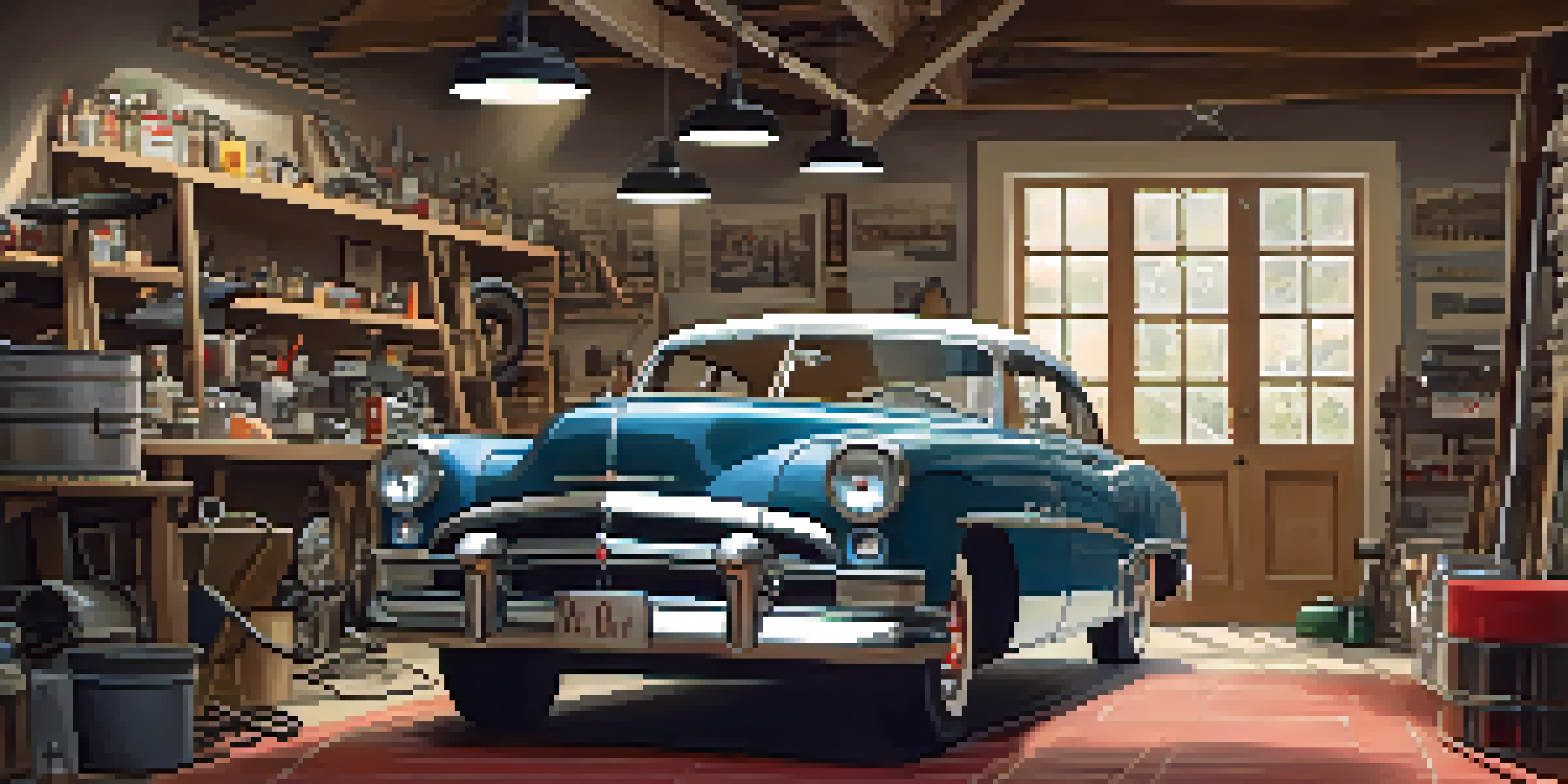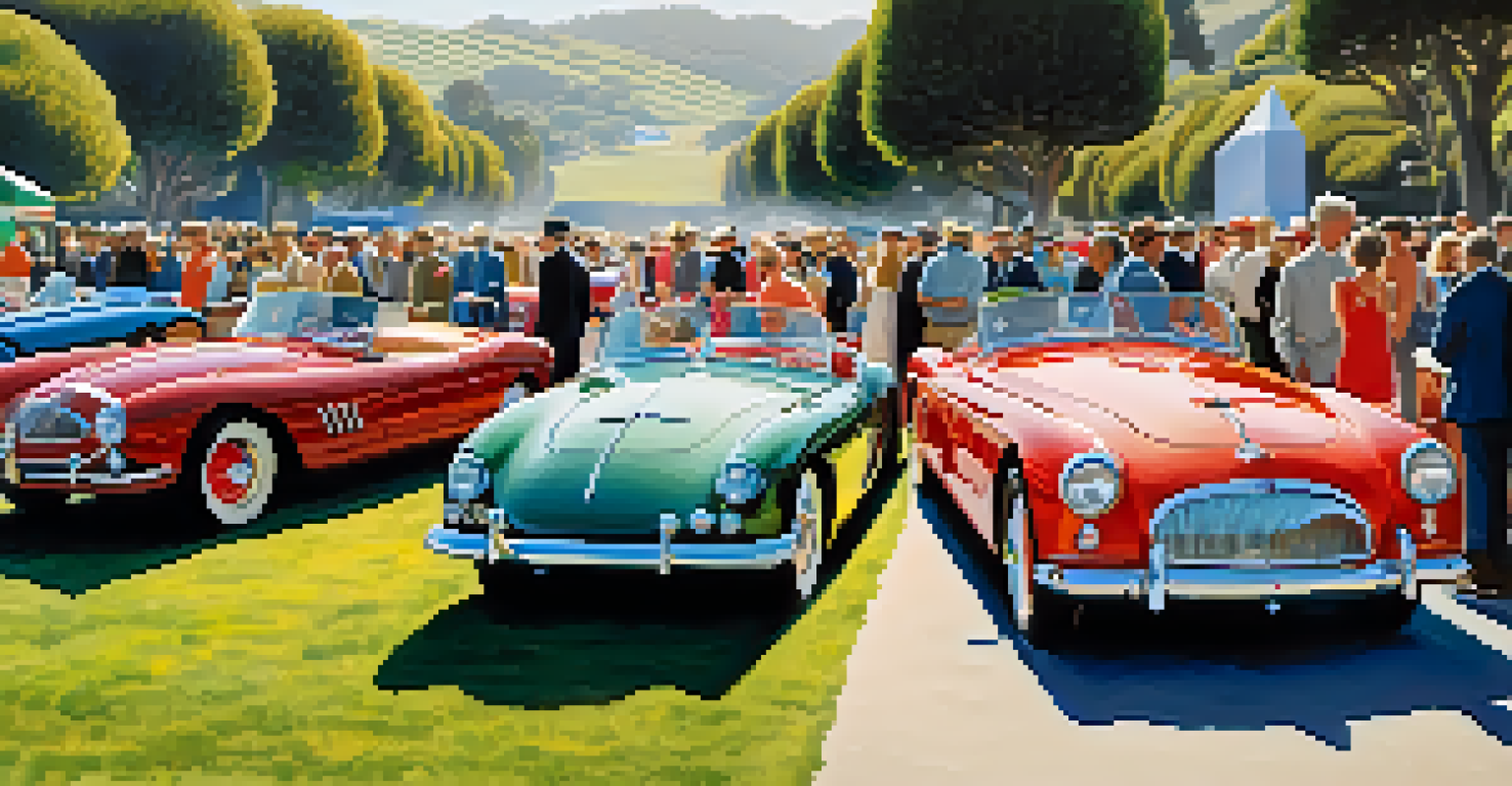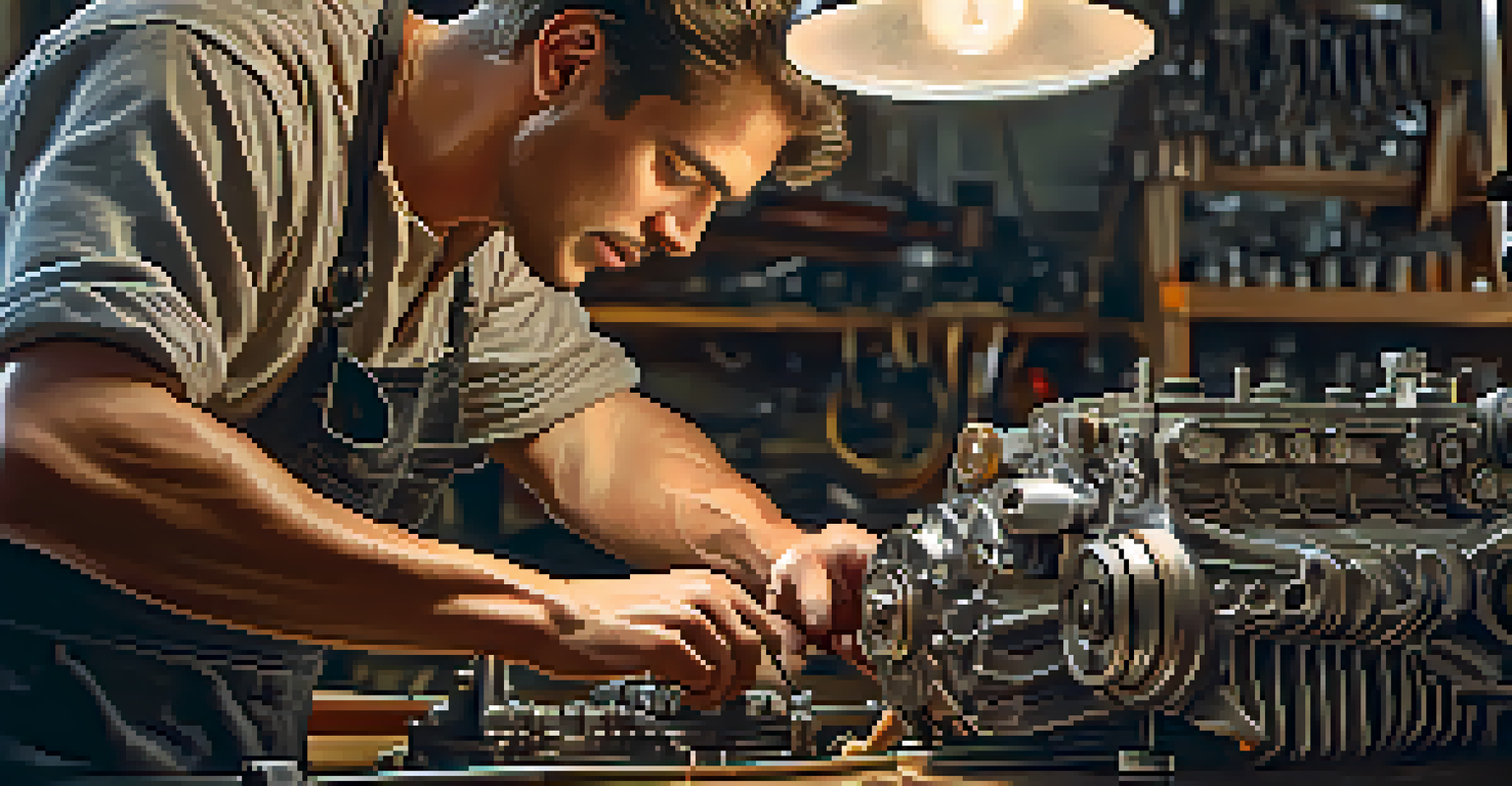Vintage Car Restoration: A Timeline of Major Milestones

The Birth of Vintage Car Restoration in the 1950s
The vintage car restoration movement began to gain traction in the 1950s when enthusiasts started to recognize the value of preserving classic automobiles. This era saw a surge in interest as car owners began to appreciate the craftsmanship and history behind older models.
The cars we drive say a lot about us.
Initially, restoration efforts were mostly amateur, with hobbyists working in their garages to bring old cars back to life. The first car shows dedicated to vintage models emerged, allowing owners to showcase their restored vehicles, fostering a sense of community among enthusiasts.
This decade laid the groundwork for future restoration trends, highlighting the importance of maintaining the authenticity of classic cars while also igniting a passion that would last for decades.
The Rise of Professional Restoration Shops in the 1970s
As interest in vintage cars grew, the 1970s saw the emergence of professional restoration shops. These businesses offered specialized services, transforming the restoration process from a hobby into a viable industry. Enthusiasts realized they could invest in professional help to achieve higher quality restorations.

During this period, restoration techniques advanced significantly, with shops employing skilled craftsmen who understood the intricacies of vintage vehicles. This development allowed for more detailed and accurate restorations, making it easier to preserve the original character of each car.
Vintage Car Restoration Grows
The 1950s marked the beginning of a movement focused on preserving classic automobiles, driven by enthusiasts' appreciation for craftsmanship and history.
The professionalization of vintage car restoration not only improved the quality of work but also increased the overall appreciation for classic cars, setting the stage for further advancements in the industry.
The Influence of Classic Car Auctions in the 1980s
In the 1980s, classic car auctions began to gain popularity, significantly influencing the vintage car restoration market. Events like the Pebble Beach Concours d'Elegance showcased beautifully restored vehicles and attracted collectors willing to pay top dollar for rare models.
Restoration is not just about returning something to its original state; it’s about preserving the story that comes with it.
These auctions created a new standard for car restoration, as bidders sought vehicles that were not only functional but also visually stunning. This demand encouraged restorers to refine their skills and pay closer attention to detail, often using original parts to maintain authenticity.
The influence of auctions helped establish the financial value of restored vintage cars, motivating more enthusiasts to invest time and money into high-quality restorations.
The Digital Age: Online Communities in the 1990s
The advent of the internet in the 1990s revolutionized the vintage car restoration scene. Online forums and communities emerged, providing a platform for enthusiasts to share tips, tricks, and experiences, fostering a global network of restoration aficionados.
Access to information became easier, with tutorials and guides available at the click of a button. This resource sharing allowed even novice restorers to tackle more complex projects, expanding the community's overall knowledge base.
Professional Shops Emerge
The 1970s saw the rise of professional restoration shops, elevating the quality of restorations and transforming the hobby into a viable industry.
The digital age not only connected enthusiasts but also led to the rise of online marketplaces where parts could be sourced, making restoration projects more accessible for everyone.
Sustainability and Eco-Friendly Practices in the 2000s
As environmental concerns grew in the 2000s, the vintage car restoration industry began to adopt more sustainable practices. Restorers started to prioritize sourcing eco-friendly materials and using techniques that minimized waste, reflecting broader cultural shifts towards sustainability.
This period also saw the rise of electric vehicle conversions, where classic cars were retrofitted with electric drivetrains. This innovative approach allowed enthusiasts to preserve the aesthetic and charm of vintage cars while embracing modern technology.
The incorporation of sustainability in restoration not only helped reduce the environmental impact but also attracted a new generation of car enthusiasts who valued both tradition and innovation.
The Popularity of Reality Shows in the 2010s
The 2010s witnessed a surge in popularity for reality TV shows centered around car restoration, bringing the craft into mainstream culture. Shows like 'Fast N' Loud' and 'Counting Cars' highlighted the exciting transformation of vintage vehicles, captivating audiences and inspiring new enthusiasts.
These programs not only showcased the artistry and skill involved in restoration but also provided valuable insights into the challenges faced by restorers. The drama of the restoration process made it relatable and entertaining for viewers, often sparking interest in vintage cars.
Digital Age Connects Enthusiasts
The 1990s brought online communities and resources, revolutionizing how vintage car restorers shared knowledge and sourced parts for their projects.
As a result, more individuals began to explore the hobby, leading to a renewed interest in vintage car restoration and a vibrant community of new restorers.
The Future: Trends and Innovations in Restoration
Looking ahead, the future of vintage car restoration is bright, with exciting trends and innovations on the horizon. Advances in technology, such as 3D printing, are making it easier to source rare parts and enhance restoration processes, allowing for more precise repairs.
Moreover, the integration of digital tools—like virtual reality—offers restorers the chance to visualize their projects before diving in, making planning easier and more effective. This tech-savvy approach is attracting younger generations to the hobby, ensuring its longevity.

As the restoration community continues to evolve, it remains rooted in the passion for preserving automotive history, ensuring that vintage cars will be appreciated for generations to come.